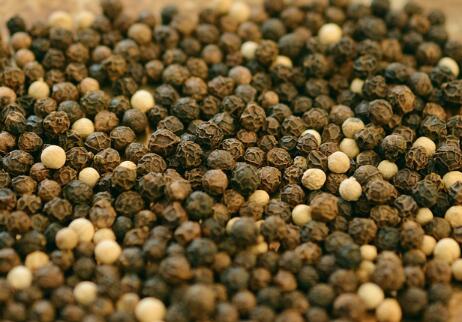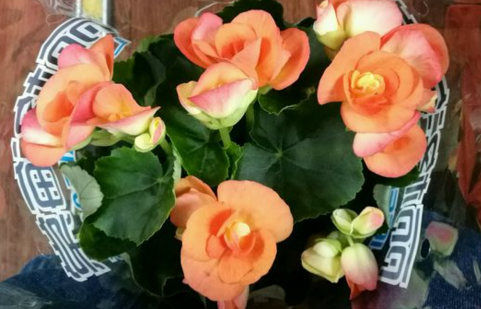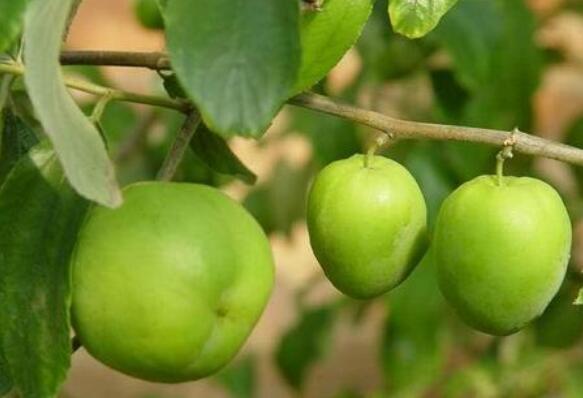How much is a pepper seedling this year? Which areas are suitable for planting? How many trees are planted per mu?
Zanthoxylum bungeanum is a deciduous shrub or small tree of the genus Zanthoxylum bungeanum in Rutaceae. it can be planted alone and can be used as a protective thorn hedger. it is also a good economic tree species. Growers must first buy pepper seedlings if they want to grow prickly ash. How much is a pepper seedling this year? Which areas are suitable for planting? How many trees should be planted per mu? How is the pepper market in 2018? How much is the price per jin?

How much is a prickly ash sapling this year?
According to previous years' experience, the market price of prickly ash seedlings varies according to varieties and specifications, generally around 0.2-0.5 yuan per tree, but the most expensive one is 1-2 yuan per tree, and some above 3 yuan. For example, Dahongpao is 0.3 yuan per 60 cm, 100 cm 0.4 yuan, nine-leaf green pepper 30 cm 1.1 yuan, 50 cm 1.5 yuan.
Where is Chinese prickly ash suitable for planting?
Zanthoxylum bungeanum is produced in the north to southwest of China and is wild in the areas below 1000m above sea level in Qinling and Taishan. It is widely cultivated in China except for a few areas such as Northeast China and Inner Mongolia. Henan, Hebei, Shanxi, Shaanxi, Gansu, Sichuan, Chongqing, Hubei, Hunan, Shandong, Jiangsu, Zhejiang, Jiangxi, Fujian, Guangdong, Guangxi, Yunnan, Guizhou, Xizang and other provinces and regions, and mostly cultivated in low mountains and hills. the edge of the terrace and around the garden. In recent years, it has formed nationally famous pepper industrial bases such as Hancheng in Shaanxi, Tai'an in Shandong, Jinyang in Sichuan, Maowen, Hanyuan and Jiangjin in Chongqing.
How many trees should be planted per mu?
Pepper saplings per mu of land had better plant less than 100, otherwise the result is not ideal, picking is not convenient. In addition, it depends on what varieties to be planted. If it is a short plant, it will plant 150 trees per mu, and the distance will be about 3 meters. If it is a tall plant, the distance will be about 5 meters. It also depends on the fat and thinness of the land. If you are fat, you can keep it secret.
Cost and benefit of planting Zanthoxylum bungeanum
Cost: the cost of planting one mu of Zanthoxylum bungeanum varies according to variety and region. The cost of planting one mu of Zanthoxylum bungeanum is between 600mu and 1200 yuan. The biggest difference is the labor cost of harvesting Zanthoxylum bungeanum.
Benefits: planting about 70 plants per mu of land, hanging fruit two years later, picking more than 1 jin of dried pepper per jin after three years, 2 jin of dried pepper per plant after five years, and about 4 jin of dried pepper per plant after 8 years. According to this year's price, 36 yuan per jin of dried pepper. The income per mu will be at least 2600 yuan after three years, 4000 yuan per mu after five years, and 5000 Murray 6000 yuan per mu after eight years.
How is the pepper market in 2018? How much is the price per jin?
"my family has sold nearly 10,000 kilograms of pepper this year. The quality of pepper is good, and the purchase price continues to rise, from 22 yuan per kilogram at the beginning to about 32 yuan per kilogram in the later period, with an income of more than 200,000 yuan. " On January 4, Liao Huachao, a farmer in Sanjiao Township, Hanyuan County, was pruning branches and leaves in his own pepper field.
Hanyuan Zanthoxylum bungeanum has a long history, since the Tang Dynasty has continued for thousands of years as a tribute to the royal family, so it is also known as "tribute pepper". For example, Liao Huachao has been growing Chinese prickly ash for ten years. But once upon a time, when it came to pepper listing season, he was worried that he could not sell at a high price.
How to protect this local characteristic, establish a brand and reverse the situation? in 2012, in order to improve the concentration of the industry, vigorously build Hanyuan pepper brand, and finally bring tangible benefits to pepper farmers, Hanyuan Zanthoxylum bungeanum Bureau came into being. Change begins at this time.
Solving the difficult situation: scientific expansion and Technology
Hu Wen, a former technician of Hanyuan County Forestry Bureau, is now the director of Hanyuan County Zanthoxylum bungeanum Bureau. Recalling the trough of Hanyuan Zanthoxylum bungeanum from 2010 to 2012, he is still very sad. "in 2010, the price once fell to 12 yuan per kilogram, not only no profit, but also a slight loss. Many farmers cut down prickly ash trees in their fields and turn to more cost-effective crops such as apples. "
The Zanthoxylum bungeanum Bureau, which was set up in such a predicament, has only three people. As soon as Hu Wen took office, he led two other comrades from the Zanthoxylum bungeanum Bureau to go to Qingxi, Yidong, Sanjiao, and other townships in Hanyuan County to investigate the situation in the whole county. "the planting technology is backward, the production capacity is low, and the sales channel is narrow. After visiting, I found that there are a lot of problems facing the development of Hanyuan pepper. "
In the past, pepper farmers were all scattered in their own way, and their technology depended on experience. After the establishment of Zanthoxylum bungeanum Bureau, it decided to change the current situation of farmers in the county. To solve the difficult problem, we should first start with the improved technology. "many farmers grow pepper management and protection is not in place, the quality of the output of pepper is not high. We will hire experts for door-to-door guidance. " Hu Wen said, "at first, farmers could not understand that under our repeated persuasion, some pepper farmers tried to learn to prune branches and leaves and use scientific fertilization methods." In the second year, these carefully protected pepper fruits became larger, their impurities decreased, and their quality improved significantly. "when pepper farmers saw the change, they learned scientific management and protection one after another."
In 2012, Hanyuan County Zanthoxylum bungeanum Bureau also joined Sichuan Agricultural University to conduct an experiment on the grafting of Chinese prickly ash. After repeated comparative study, 12 Zanthoxylum bungeanum mother trees with strong disease resistance were selected for grafting and promotion in the whole county.
"when visiting Jianli Township, Qingxi Town, we found that local pepper farmer Li Jianyong grafted dozens of prickly ash trees with the method he had groped out. By comparison, the aromatic oil content of Zanthoxylum bungeanum grafted by Li Jianyong is higher than that of common prickly ash fruit. " Hu Wen hired this "soil expert" to teach and promote the grafting method of Chinese prickly ash throughout the county. "so far, we have promoted the marriage of nearly 6000 mu of prickly ash trees, and the results are all good."
Difficulties: there is a way to expand the industry
On January 4, in a small shop in Hanyuan County, du Yu, the boss, was busy introducing Hanyuan pepper to customers. "Zanthoxylum bungeanum in our shop is hand-selected, red and bright in color and fragrant at the entrance." Du Yu's shop specializes in all kinds of Hanyuan native products, and pepper alone can sell tens of thousands of kilograms every year.
In addition to operating local specialty stores in mountain villages, du Yu also has an identity, that is, the chairman of a professional cooperative for farmers growing tribute peppers in Hanyuan County. "I am from Fumin Village, Qingxi Town. My family has planted several mu of pepper and sold it through my own shop or cooperative." He said that every year, cooperatives can sell millions of kilograms of pepper through a variety of online and offline channels, and the income is very considerable.
Encouraging farmers to expand the pepper industry is another problem-breaking move of the Zanthoxylum bungeanum Bureau. "for every mu of pepper planted by farmers, we give farmers a total of 600 yuan, including subsidies for seedlings, pesticides and chemical fertilizers, which has played an important role in arousing the enthusiasm of farmers." Like Liao Huachao, with subsidies, coupled with pepper prices getting better and better, but also continue to expand the planting area, "now my family has more than 30 mu of pepper land."
Since the establishment of Zanthoxylum bungeanum Bureau, in a short period of 5 years, the planting area of Zanthoxylum bungeanum in Hanyuan County has expanded from 70, 000 mu to 120000 mu, the annual output has soared from 4.5 million kg to 11.3 million kg, and the price has increased from 12 yuan / kg to 26 yuan / kg. In 2017, the output value of Zanthoxylum bungeanum in Hanyuan County reached 305 million yuan. "over the past five years, the output and price of Hanyuan Zanthoxylum bungeanum have doubled. Our Zanthoxylum bungeanum Bureau has also expanded its team, and now there are five people." Hu Wen said with a smile.
As more and more mainlanders and foreigners accept Hanyuan Zanthoxylum bungeanum, the market of Zanthoxylum bungeanum is also expanding. "in 2016, we launched a publicity campaign on Hanyuan Zanthoxylum bungeanum in Kunshan, bringing 1.1 million yuan of orders to Yongfenghe Food Factory in Hanyuan County." Hu said that Zanthoxylum bungeanum Bureau is also actively exploring other values of Zanthoxylum bungeanum. Hanyuan Zanthoxylum bungeanum can not only be used for seasoning, but also has a health care effect. Now some manufacturers have developed pepper pillows, pepper wine and other derivative products, and gradually promote to the market.
The director said
The unique hometown of Chinese pepper
Hu Wen, Director of Hanyuan County Zanthoxylum bungeanum Bureau:
Hanyuan Zanthoxylum bungeanum is mainly produced in the southern foot of Niba Mountain in Daxiangling. The unique climate gives birth to the unique quality of Hanyuan pepper. According to the national pepper area sampling analysis of Central South Agricultural College, the volatile aromatic oil content of Hanyuan Zanthoxylum bungeanum is 8.56%, which is much higher than that of other domestic producing areas. Its ash content is 4.18%, which is lower than that of other domestic producing areas. One high and one low, showing the excellent quality of Hanyuan pepper.
As a result of the production of pepper fruit and epiphytic 1 Mel 3 pure meat small pepper, Hanyuan pepper is also commonly known as "baby pepper" or "mother pepper". It has the unique flavor of heavy oil, red color, rich fragrance and delicious fragrance.
In 2001, Hanyuan was named "the hometown of Chinese Zanthoxylum bungeanum" by the State Forestry Administration, "Hanyuan Zanthoxylum bungeanum" was protected by National Geographic indication products in 2005, and "Hanyuan Zanthoxylum bungeanum" was certified by National Geographic indication in 2009.
Time: 2019-03-22 Click:
- Prev

When does Rieger Begonia blossom? How to pick the heart? What if the farmed leaves wither?
Rieger Begonia, also known as Rose Begonia, Rieger Begonia, rich in color, red, orange, yellow, white and so on, the flowers are huge, colorful, unique appearance, color, fragrance, and long flowering period, so, when will Rieger Begonia bloom? How to pick the heart? What if the farmed leaves wither? When does Rieger Begonia blossom
- Next

How much is the green jujube sapling price? How many years do you want to bear fruit? What are the planting techniques?
Green jujube is a kind of tropical and subtropical fruit, which is planted as evergreen fruit trees in tropical and subtropical regions and deciduous fruit trees in temperate regions. So how much is the sapling price? How many years do you want to bear fruit? What are the planting techniques? It is reported that green jujube trees are all grafted seedlings and begin to bear fruit in the second year.
Related
- Fuxing push coffee new agricultural production and marketing class: lack of small-scale processing plants
- Jujube rice field leisure farm deep ploughing Yilan for five years to create a space for organic food and play
- Nongyu Farm-A trial of organic papaya for brave women with advanced technology
- Four points for attention in the prevention and control of diseases and insect pests of edible fungi
- How to add nutrient solution to Edible Fungi
- Is there any good way to control edible fungus mites?
- Open Inoculation Technology of Edible Fungi
- Is there any clever way to use fertilizer for edible fungus in winter?
- What agents are used to kill the pathogens of edible fungi in the mushroom shed?
- Rapid drying of Edible Fungi

